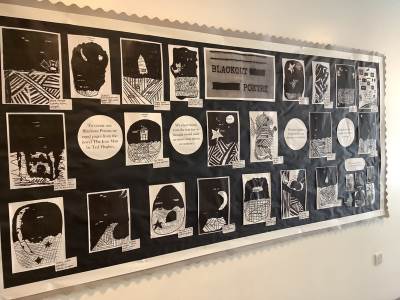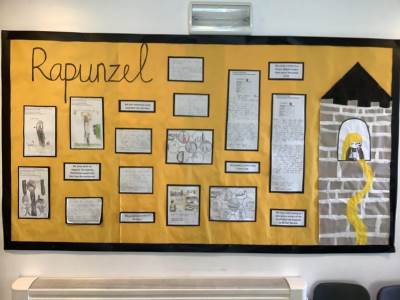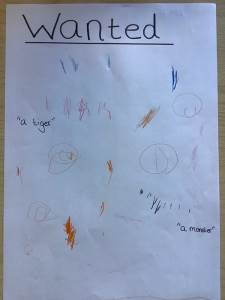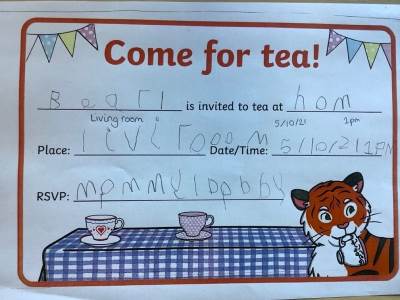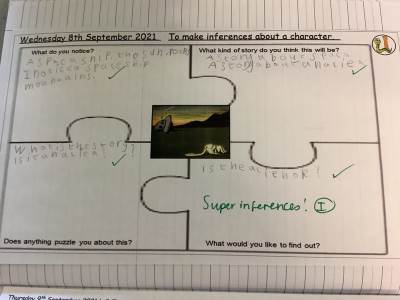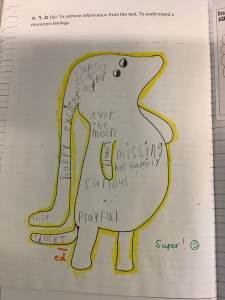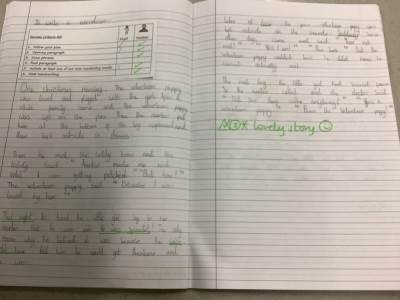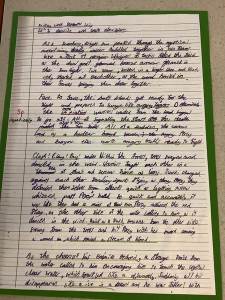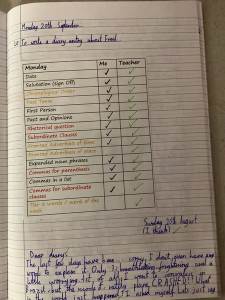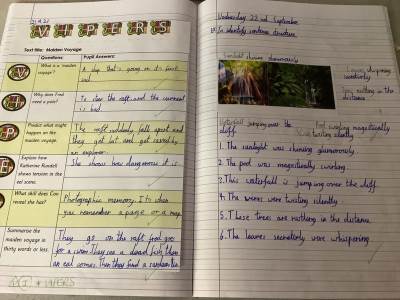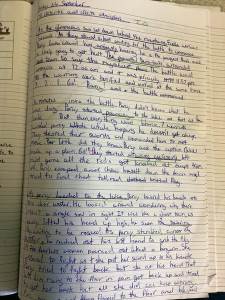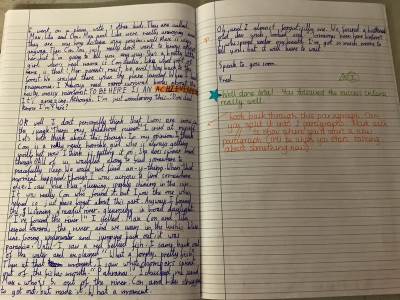Literacy
From the very start, children are encouraged to have a love of books and reading. Word reading skills are taught through the Read, Write, Inc approach supported by a wide range of home readers, books and texts. Comprehension skills are taught through a range of individual, group and whole class teaching where teachers use VIPERS to develop the children’s skills across the range of abilities.
To see the progression of skills in Reading from EYFS to Year 6, please read our Progression of Reading Overview.
Early Reading
Phonics Read Write Inc
We use the Read Write Inc programme in Reception and Key Stage 1. This programme includes a systematic and dynamic whole-school approach to teaching phonics. This programme is supplemented by a wide range of other reading materials that the children use at home and at school. Children in Key Stage 1 follow a phonics programme that supports their individual reading level.
For more detailed guidance and resources, please visit out Early Reading and Phonics page.
Home Reading
While children in Reception and Key Stage 1 access Read Write Inc Book Bag books as their home reader, once they have completed Read Write Inc, they progress into the bridging Oxford Reading Tree levels of white and lime.
Children in Years 3 and 4, who still require phonics intervention, will take Read Write Inc Book Bags home until they have completed Read Write Inc grey level. After this, they will move onto Oxford Reading Tree brown level 8 reading books.
In Key Stage 2, children take home two reading books; a leveled home reading book which reflects their reading ability and a library book which children can select from their year group library. For home readers, children progress through the Oxford Reading Levels, beginning at Level 8 through to Level 20. These books stem across a wide range of genres including fiction, non-fiction, poetry, classics and graphic novels.
VIPERS focus on the teaching of the following reading skills; Vocabulary, Inference, Prediction, Explanation, Retrieval and Summarise (KS2)/Sequence (KS1). When teaching reading in a whole class context, teachers may focus on practising one skill in isolation or more than one depending on the text used. When listening to readers one-to-one, adults in school will choose a VIPERS focus and develop that reading skill with a child.
In addition, in KS2 we have a weekly comprehension lesson where children read unfamiliar texts across a range of genres and answer comprehension questions.
Whole School Reading Spine
High quality class texts have been chosen and compiled in a reading spine to challenge and inspire children’s thinking and is a driver for the teaching of writing and grammar, punctuation and spelling. You can view a breakdown of our Whole School Literacy Overview below to see the progression in our class texts from EYFS to Year 6.
Recommended Readers
In addition, we also have a list of suggested high-quality reading books for each year group called our ‘Recommended Readers’. As with the Whole School Literacy Overview, these books have been carefully selected for children to read at home and span across different genres and include a range of topics. We highly encourage our children to read frequently at home and record any home reading in our reading records.
Please view our ‘Recommended Readers’ below for each year group. If you would like further suggestions of books for your children to read at home, please contact the class teacher.
Recommended Reading Reception
Recommended Reading Y1
Recommended Reading Y2
Recommended Reading Y3
Recommended Reading Y4
Recommended Reading Y5
Recommended Reading Y6
Each class has a copy of the recommended reading books in class as part of our reading areas. Our children enjoy writing book reviews of the books they have read, recommending them to others in the class and we also display them in our school library. Our wonderful school library contains many books including those from much loved children’s authors and books of every genre. Our children enjoy reading their books in the library or in our other reading areas both inside school and outside in our designated reading area within the cabin. Children also regularly have the opportunity to take library books home to enjoy.
In addition, our upper KS2 children have access to an online website called Reading Plus. This website contains a range of online texts which help children to improve their fluency through a guided reading window and comprehension questions across the key strands. Children can access Reading Plus at both school and home and complete weekly reading and vocabulary activities as part of our KS2 Literacy curriculum.
In lower KS2, children requiring extra reading support use Lightning Squad Reading Intervention. This intervention helps children develop strategies for decoding, comprehension and spelling.
Reading Buddies and Reading Ambassadors
There are children who are chosen as ‘Reading Ambassadors’. Their role involves talking to their class about books they have read and enjoyed, helping others to pick a good book, keeping class book corners and reading books tidy, writing book reviews to share with others, helping to keep the library tidy and organised. Our Reading Ambassadors also run a lunchtime reading club for KS1 children in our school library. Reading Buddies sit and listen to KS1 children read their home readers once per week.
We are currently participating in the Libraries for Primaries initiative through the National Literacy Trust. We are currently busy renovating our library and will have 500 new books to share with the children.
Writing
Class texts are the main driver for the teaching of writing. Through these children are taught the skills of spelling, handwriting, composition, and vocabulary, grammar and punctuation in line with national end of year expectations. As with all subjects, able children are extended further and those requiring support receive additional teaching and intervention. By the end of Key Stage 2, all children will have worked with an author.
To see the progression of skills in Writing from EYFS to Year 6, please read our Progression of Writing Overview.
In school, we dedicate a lot of time to improving our vocabulary and exploring new, ambitious word choices through
Each class displays their tier 2 and tier 3 key words which are discussed, investigated and explored after being carefully selected from our class texts or curriculum topics. We also have our ‘words of the week’, which focus on words that our children many not encounter in their everyday life or in common tasks. In addition to the meaning and spelling of the word, we also explore synonyms and antonyms and look for opportunities to use these words, along with the others, in our writing.
EYFS and KS1 Vocabulary Lists from NHS Speech and Language Team
Vocabulary lists recommended by Speech and Language NHS Team are used as a guide to teach tier 2 vocabulary in EYFS and KS1.
EYFS also use Anchor, Goldilocks, Step-up words and KS1/2 select from Vocabulary Ninja Tier 1-3 words.
Spelling
For spelling, we follow the National Curriculum, teaching the progression of spelling rules across the whole school, along with Read Write Inc phonics at KS1 level. For the full list of spelling objectives, please click here.
To practise weekly spellings in a fun and interactive way, we use Spelling Shed online, which enables children to practise at different levels individually, before having the opportunity to compete against others in the class. To access Spelling Shed so that your child can log into their account please visit the website here.
Literacy from EYFS to Year 6
Literacy






